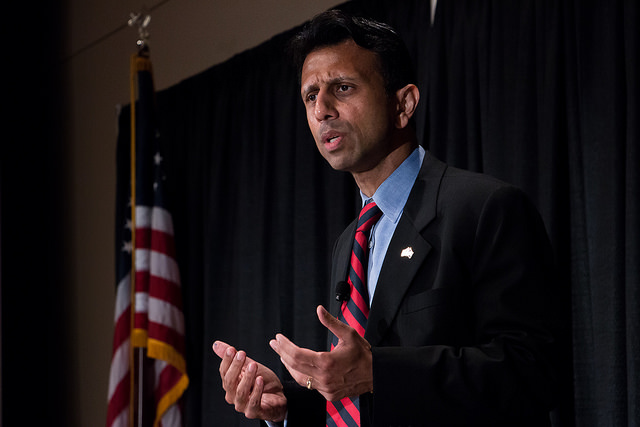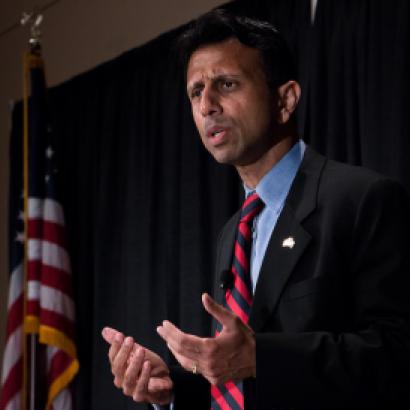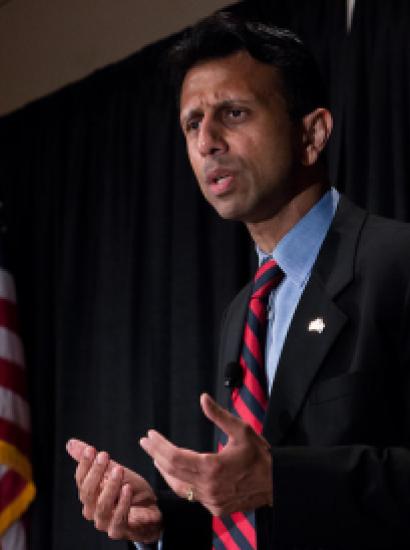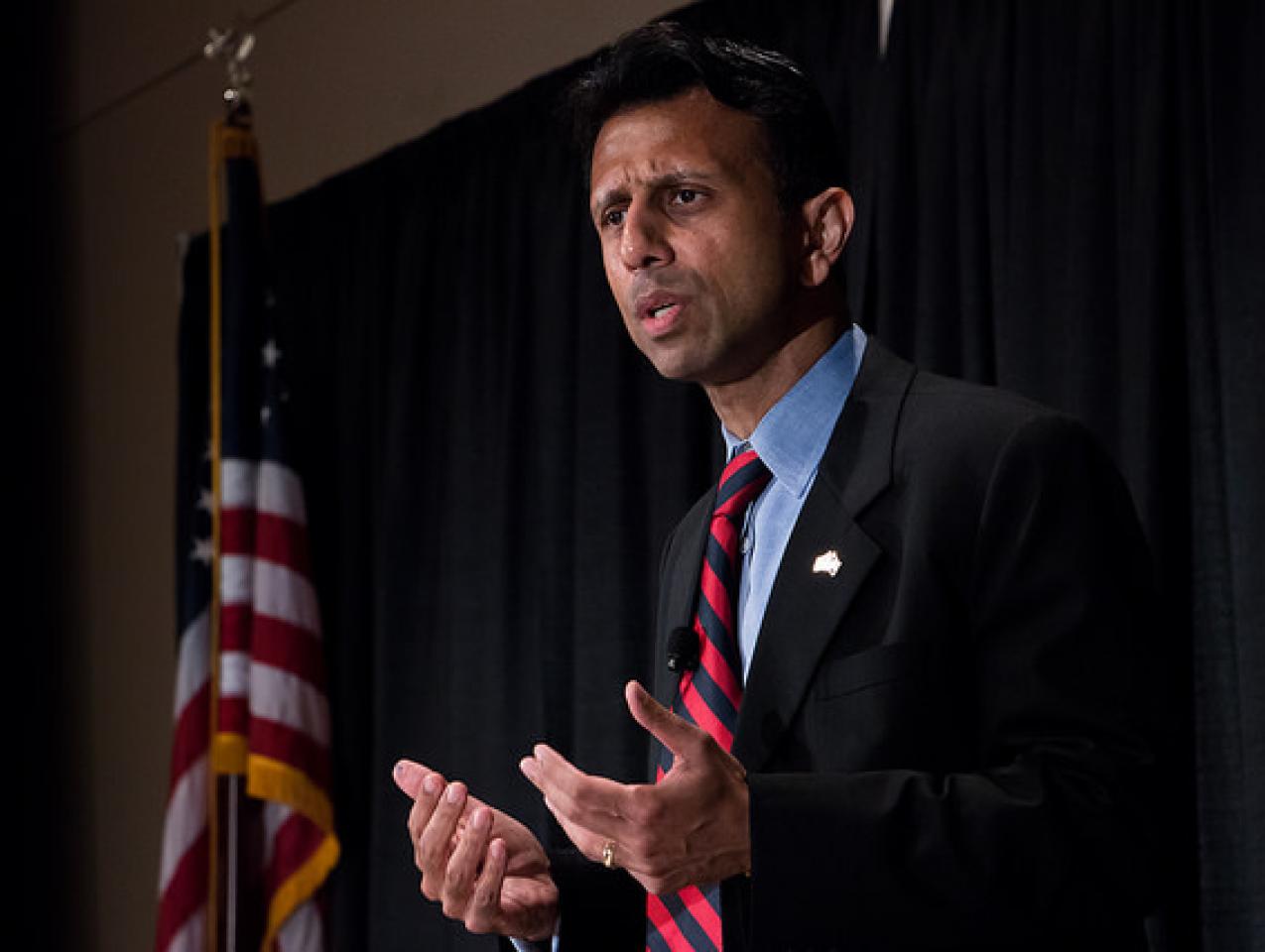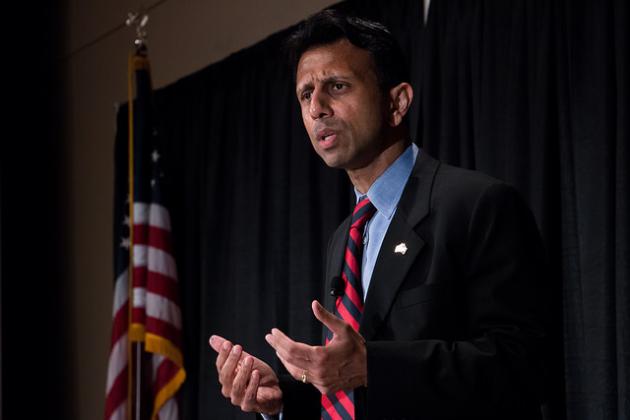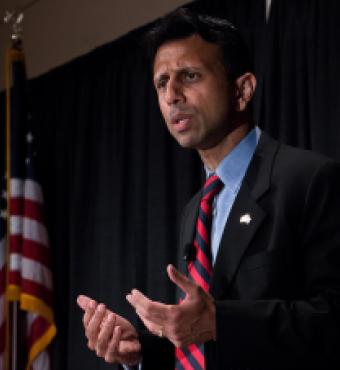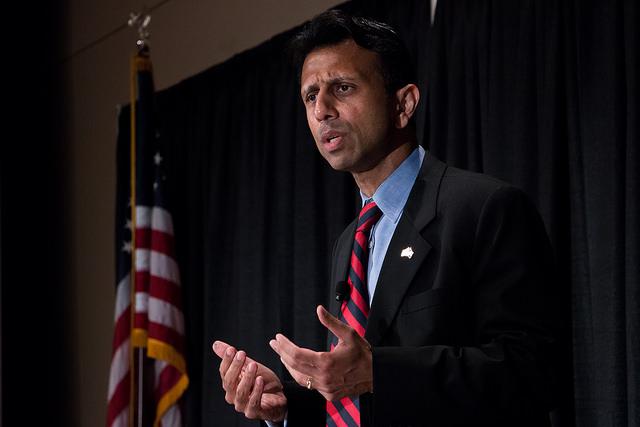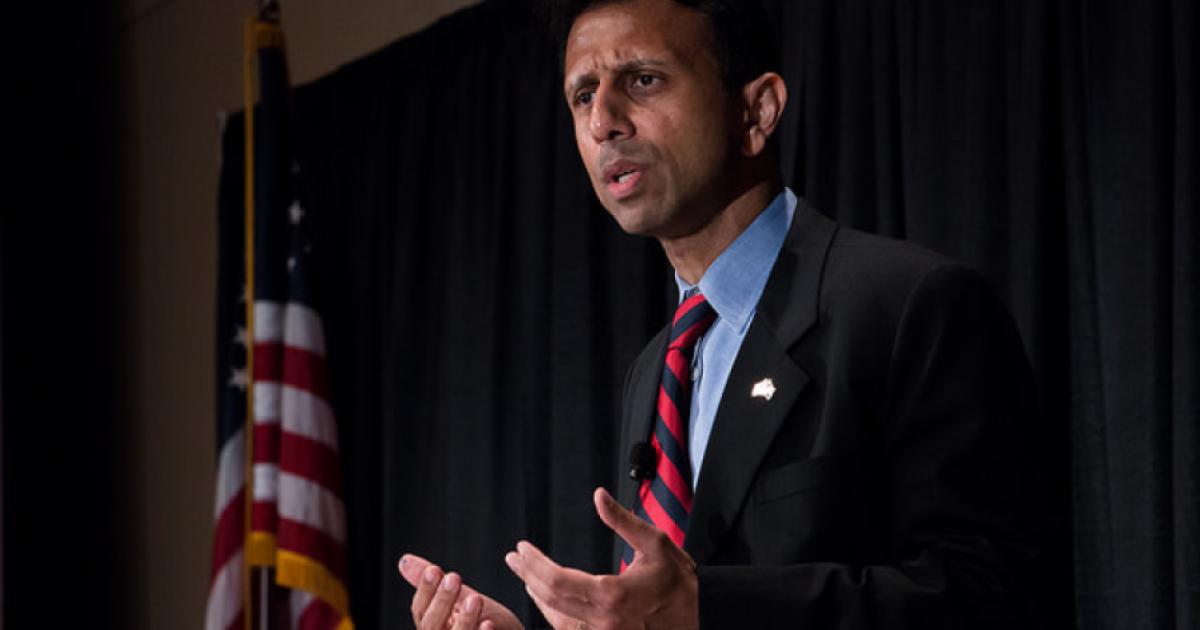- Education
The case of Jindal v. U.S. Department of Education, in which Louisiana Governor Bobby Jindal challenged the department over the Common Core national curriculum-content standards and accompanying federally funded national tests, ultimately boiled down—in the judge’s ruling—to the meaning of a single word: curriculum.
The court rendered its decision in favor of the federal government. Jindal sought relief for his state from burdens stemming from federal support of Common Core. But on Sept. 16, 2015, U.S. District Judge Shelly Dick denied that Common Core was a curriculum, which the federal government is forbidden to interfere with, and said that federal education programs do not infringe on state sovereignty over education, since, she says, the Common Core was adhered to on its own by Louisiana, not forced on the state by the federal government, in her opinion.
Jindal, who is seeking the GOP presidential nomination, sued the education department in August 2014. His argument was that three longstanding federal statutes prohibit the department from exercising “any” direction, supervision, or control over curriculum or the program of instruction in the states. The education department violated these prohibitions when it not only funded the national assessments, gave privileged status to the Common Core curriculum content, and threatened to penalize states if they did not adhere to the curriculum content and aligned tests, according to Jindal.
Looking at its usage, the concept of “curriculum” can include a large number of components: academic content; lesson plans; textbooks and teaching materials; teaching methods; scope and sequence; and assessment.
Some—including highly influential curriculum specialists like Ralph W. Tyler and Benjamin Bloom—take a broad view and include all or almost all of these components within the compass of curriculum. Some influential policy analysts like Stanford University’s Michael G. Kirst, the current president of the California State Board of Education, also take this broad view.
Others take a narrower view. Some of these people would include as components of curriculum: only lessons; materials; methods; and scope and sequence—separating out content and testing. This was sometimes the view of another of the federal government’s witnesses (Timothy Shanahan)—the narrower view was ultimately the view the court adopted.
Curriculum in schools has historically been reserved as an area of state and local control—and federal involvement in education has respected that boundary. But the Louisiana governor argued that President Obama and his education department changed federal education practices and crossed the permissible line of federal involvement by replacing its historical purpose of promoting educational opportunity with a new purpose of achieving uniformity in curriculum and testing. This occurred when the federal government required states to adhere to the Common Core and its associated tests, or risk losing substantial flexibility and federal funds.
In her ruling, Dick said that the federal government never explicitly endorsed Common Core and did not write it. Dick, whom Obama appointed to the bench, said the education department’s requirements connected to the Common Core did not rise to the level of coercion.
The Common Core is a set of curriculum-content standards for mathematics and English for K-12. Its tests are part of an aligned K-12 system in which subject matter, teaching materials, textbooks, and tests are all in line with one another. Its assessments can have serious consequences for students, teachers, and schools because, for example, student placement or graduation, evaluations of teachers, and standing of schools and districts can depend on the results. States are required by federal law to give tests (either the national Common Core tests or equivalents) to all public-school students. Hence, they drive teaching toward a nationwide educational uniformity. The Obama administration has embraced the new Common Core-aligned system, and said it expects great improvements in student learning because of it.
The court emphasized its belief that “under” Race to the Top, a competitive grant program that was part of the 2009 federal stimulus package, states “are not required to have content standards … certified or approved” by the education department. But this not precisely true. Under the initiative, the state is required to pick either a pre-approved set of standards (namely Common Core) or follow a federally-prescribed process to have its standards approved to receive money. This constitutes federal interference with state control over education.
Dick writes, in her opinion, that the Common Core is not an actual curriculum. “Standards represent the goals sought to be attained, whereas curriculum specifies the means and methods to be used in attaining those goals,” Dick said. “Simply put, if a [school system] wishes to teach math skills by counting fingers and toes or by using flash cards or some other means, such is the sole choice and prerogative” of the school system.
Dick here accepts the claim of the federal government’s witnesses that the Common Core does not dictate teaching methods or scope and sequence – which are part of curriculum in anybody’s definition. This issue is important because since the Common Core has been given privileged status by the federal government, if it dictates what are components of curriculum in anybody’s definition, then the federal government is violating the statutory prohibition of “any” federal direction of curriculum.
But in fact, the Common Core often dictates when and how to teach various topics. For example, it says to teach Algebra I in ninth grade (although high-performing countries teach it in eighth). It dictates how proof of the congruence of triangles should be taught in the classroom and requires that a method, known as “rigid motions,” be used although it’s never been taught successfully in K-12 education in America. The Common Core English standards dictate the proportions of informational text and literary text that students should read in different grades. And, finally, the federally-funded tests assess whether these topics have been learned as prescribed.
Dick acknowledges that to succeed, Jindal “must demonstrate that he is substantially likely to prove that [Common Core]…mandate specific elements of the State’s academic content standards.” Yet that is precisely what the examples above— when to teach Algebra 1, or how to teach triangle congruence— demonstrate: mandated specific elements.
Further, Dick found that “[e]ven if the Court agreed with Jindal’s assertion that the DOE ostensibly mandates the adoption of the CCSS, there is no evidence in the record establishing that the CCSS is the DOE’s forced choice of a particular curriculum.” She seems to interpret the prohibition on “mandating a particular curriculum” in the sense of mandating a single specific instructional program, while ignoring other aspects of the issue. But Common Core, to use the example above, clearly mandates the exclusion of a broad range of curricula that teaches triangle congruency in the traditional way rather than in the experimental way it insists on.
The Common Core also imposes uniformity of subject-matter content across the states—content that is so much the same that any differences are insignificant (and that uniformity is policed through tests)— and it excludes content or alternative teaching methods (as in the case of congruent triangles). The three congressional statutes forbid “any” federal interference in curriculum because a federal system is not a system of uniformity – a federal system is a system of differences among the states. Without a doubt the Common Core is an effort to remove differences in curriculum content.
Again, central to the case is the meaning of the word “curriculum”—the issue of what curriculum itself is. The judge had to decide what curriculum is and how curriculum is affected by testing. Testing is important because in the case of Common Core, the federal government funded the national assessments and monitored their development. The Jindal side considered both the broad and the narrow concepts of curriculum:
Under the broad concept, the Jindal side said: If testing is part of curriculum, since the feds funded the tests, then the feds directed curriculum and violated the law. The judge dismissed the broad concept entirely.
Under the narrow concept, the Jindal side said: If the tests necessitate teaching to the test in a way that drives content, lessons, materials, methods, or scope and sequence and since at least some (if not all) of these are part of curriculum, then since the feds funded the tests, they violated the law. The judge said nothing about this point of the Jindal side.
Or, again under the narrow concept, the Jindal side said: In an aligned system, if the content, lessons, materials, methods, or scope and sequence are part of the curriculum and they must be aligned with the tests, since the feds funded the tests, they violated the law. The judge said nothing about this Jindal point either.
Timothy Shanahan, a reading specialist from the University of Illinois and the federal government’s leading expert witness, said there are a “plethora” of definitions of “curriculum,” so congressional statutory prohibitions on interference with curriculum are meaningless and the department is not constrained by such a prohibition.
If there had to be a definition, Shanahan preferred the usage of bureaucrats in state capitals, many of whom are federally-funded compliance officers, instead of following the broad and expansive usage of founding and influential figures in the field of curriculum studies. (The usage of federally-funded compliance officers – who have in effect “colonized” state education bureaucracies on behalf of the federal government is unsurprising. Their usage is narrow and hence allows for the maximum federal interference and the maximum scope for the jobs of these same bureaucrats.) The court cited this testimony with approval.
The court also cited favorably Shanahan’s claim that that no curriculum expert known to him has ever defined curriculum as including content standards or tests or both. Yet Shanahan himself cited Ralph Tyler—a founding figure in curriculum studies, who was widely recognized as the “dean” of the field—as an authority in his expert report. Jindal’s side pointed out in the record that Tyler included both standards and tests within the meaning of curriculum, but this was ignored by the court.
Shanahan also said that “alignment” (which is required by the federal government’s own rules and regulations) is not a technical term and has no real definition or purpose. He said “alignment” is operationally meaningless. According to this thinking, the education department requiring alignment of federally-funded tests or other tests with federally-approved content standards like Common Core cannot be statutorily-prohibited interference with curriculum.
Shanahan’s position is contradicted by a whole academic field of alignment studies with recognized scholars and disciplinary studies. The federal government itself has published many pages describing how to achieve “alignment” in connection with receiving federal funds.
The court, amazingly, never discussed the effect of the federal government’s requirement of alignment of curriculum with federally-funded tests or their equivalents. But in an aligned system, if you change one component—as the federal government unquestionably did by funding the national assessments—you change all components, including curriculum, which the federal government is forbidden to direct or control.
In addition to using the Race to the Top program as a means to initially obtain state commitments to participate, the department also started a program where it issued waivers that relieved states of penalties for not meeting No Child Left Behind Act targets for student achievement and relieved states of the obligation to comply with the law in other areas. These waivers, however, imposed conditions on the states, requiring that every state’s curriculum-content standards meet federal specifications.
Derek W. Black, a law professor who specializes in education and civil rights law at the University of South Carolina, described the waivers, in his expert report, as executive overreach—an unlawful exercise by the Obama administration of lawmaking powers. These waivers, according to Black, are not statutorily-permitted relief but instead imposed new burdens not authorized by Congress on the states.
The states were trapped into assuming the burdens when the department threatened loss of state’s financial flexibility and loss of federal-aid-to-education money. Subsequently, states stuck with Common Core because, Black argues, they feared the department would take away the states’ NCLB waivers and impose the threatened penalties.
Nonetheless, despite the fact that the federal government gave a privileged status to Common Core and requires that Louisiana’s curriculum-content standards pass muster under federally mandated procedures, Dick ruled this was not enough to constitute coercing Louisiana regarding Common Core.
The federal government and the court pointed out, accurately, that Jindal originally approved of and supported the Common Core effort through Louisiana’s participation in the Race to the Top grant program and by receiving a waiver from No Child Left Behind penalties. Dick also wrote that such programs were “voluntary.”
The federal government’s argument stressed the details of the state of Louisiana’s adherence to Common Core, its Race to the Top grant application, and its waiver application. If the waiver process itself was flawed and illegal and if both the Race to the Top and the waiver conditions violated prohibitions in three federal statutes, the details of getting in or out of Common Core don’t matter that much -- since both Race to the Top and the waivers are Education Department efforts that themselves are prohibited.
In the end, this war over a word is more importantly over larger issues. Jindal v. U.S. Department of Education was about who has sovereignty over public education—the federal government or the states? Does the federal government have authority to exercise control over what goes on in the classroom? Has the Education Department—by backing Common Core and its assessments—violated Congress’s repeated prohibition on exercising “any” direction or control over classroom academics? What additional consequences follow if this policy area—an area traditionally held by Congress and by the States to belong under local control and an area at the heart of differences between state and federal jurisdiction—is ceded to the federal government?
Common Core and its associated tests are part of curriculum and put the country on the path to a national curriculum by strongly influencing what goes on in the classroom. In my view and in the view of Gov. Bobby Jindal, the extent of this influence rises to the level of federal direction and control of curriculum and of the course of instruction. Given the facts and the arguments on both sides, it is unfortunate that the court found for the U.S. Department of Education and upheld federal actions supporting Common Core and its tests. Jindal attorney Jimmy Faircloth told the New Orleans Times-Picayune that Judge Dick misinterpreted the law. As Faircloth puts it, the Race to Top and the federal waiver program clearly allowed the federal government to create an illegal scheme designed to direct—to a large extent—public education in a state. “We believe the ruling is wrong,” Faircloth said, “and we are confident that the 5th Circuit will agree.”







